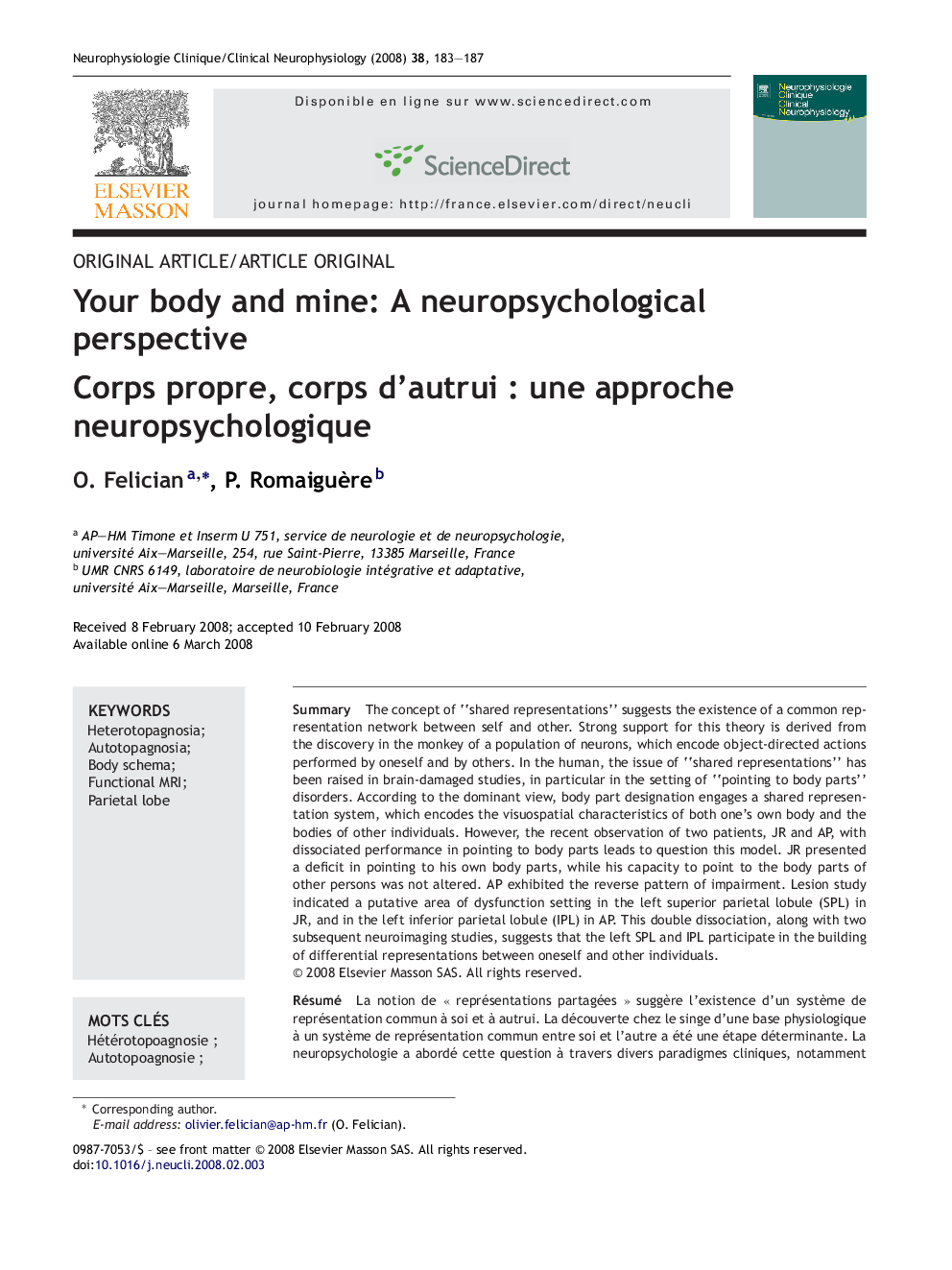| Article ID | Journal | Published Year | Pages | File Type |
|---|---|---|---|---|
| 3083210 | Neurophysiologie Clinique/Clinical Neurophysiology | 2008 | 5 Pages |
SummaryThe concept of “shared representations” suggests the existence of a common representation network between self and other. Strong support for this theory is derived from the discovery in the monkey of a population of neurons, which encode object-directed actions performed by oneself and by others. In the human, the issue of “shared representations” has been raised in brain-damaged studies, in particular in the setting of “pointing to body parts” disorders. According to the dominant view, body part designation engages a shared representation system, which encodes the visuospatial characteristics of both one's own body and the bodies of other individuals. However, the recent observation of two patients, JR and AP, with dissociated performance in pointing to body parts leads to question this model. JR presented a deficit in pointing to his own body parts, while his capacity to point to the body parts of other persons was not altered. AP exhibited the reverse pattern of impairment. Lesion study indicated a putative area of dysfunction setting in the left superior parietal lobule (SPL) in JR, and in the left inferior parietal lobule (IPL) in AP. This double dissociation, along with two subsequent neuroimaging studies, suggests that the left SPL and IPL participate in the building of differential representations between oneself and other individuals.
RésuméLa notion de « représentations partagées » suggère l’existence d’un système de représentation commun à soi et à autrui. La découverte chez le singe d’une base physiologique à un système de représentation commun entre soi et l’autre a été une étape déterminante. La neuropsychologie a abordé cette question à travers divers paradigmes cliniques, notamment celui de la désignation des parties du corps. Selon le modèle dominant, la désignation des parties du corps engage un système de « représentations partagées » des corps, en charge d’encoder les caractéristiques visuospatiales communes à son propre corps et à celui d’autrui. Cependant, l’étude de deux sujets (JR et AP) présentant des performances dissociées sur des épreuves de désignation des parties du corps conduit à interroger les limites de ce partage. JR avait des performances intactes lors de la désignation des parties du corps d’autrui et une altération profonde de la désignation des parties de son corps propre. AP présentait un profil de perturbation inverse. L’étude lésionnelle révéla des zones putatives de dysfonction cérébrale, intéressant le lobule pariétal supérieur (LPS) gauche chez JR, et le lobule pariétal inférieur (LPI) gauche chez AP. Cette double dissociation, clinique et anatomique, suivie de deux études en imagerie fonctionnelle, suggèrent que LPS et LPI gauches participent à la construction d’une représentation différentielle entre soi et autrui.
